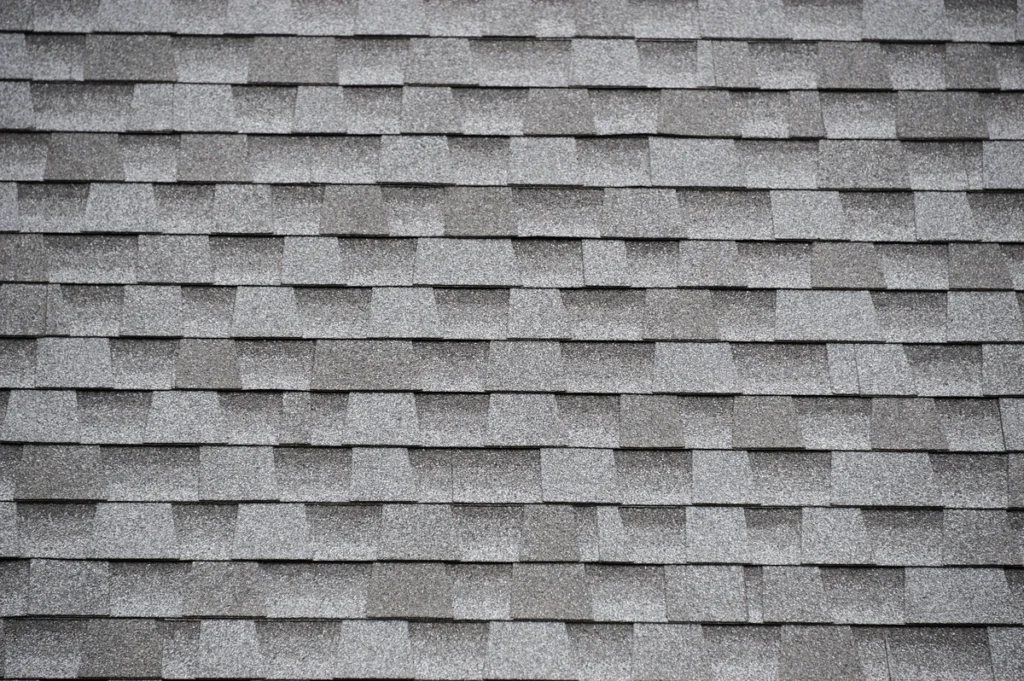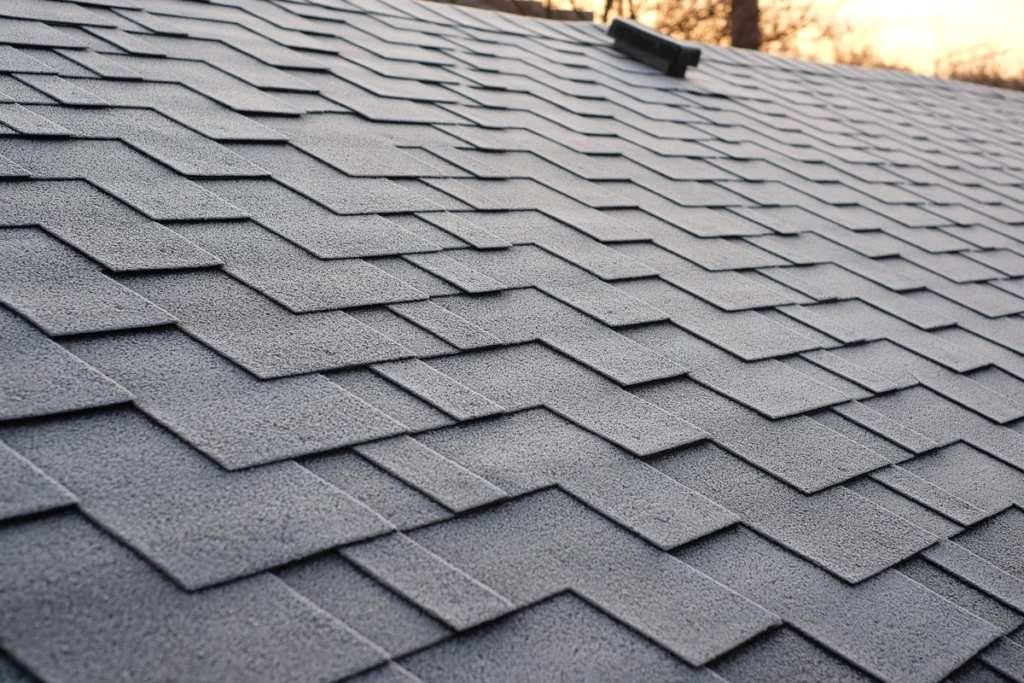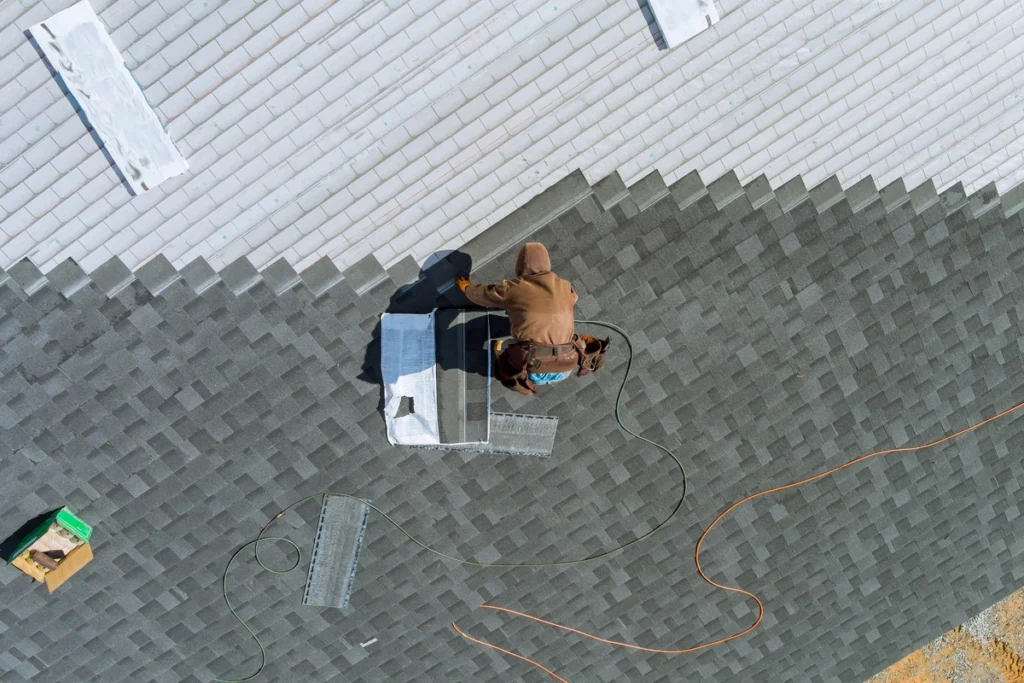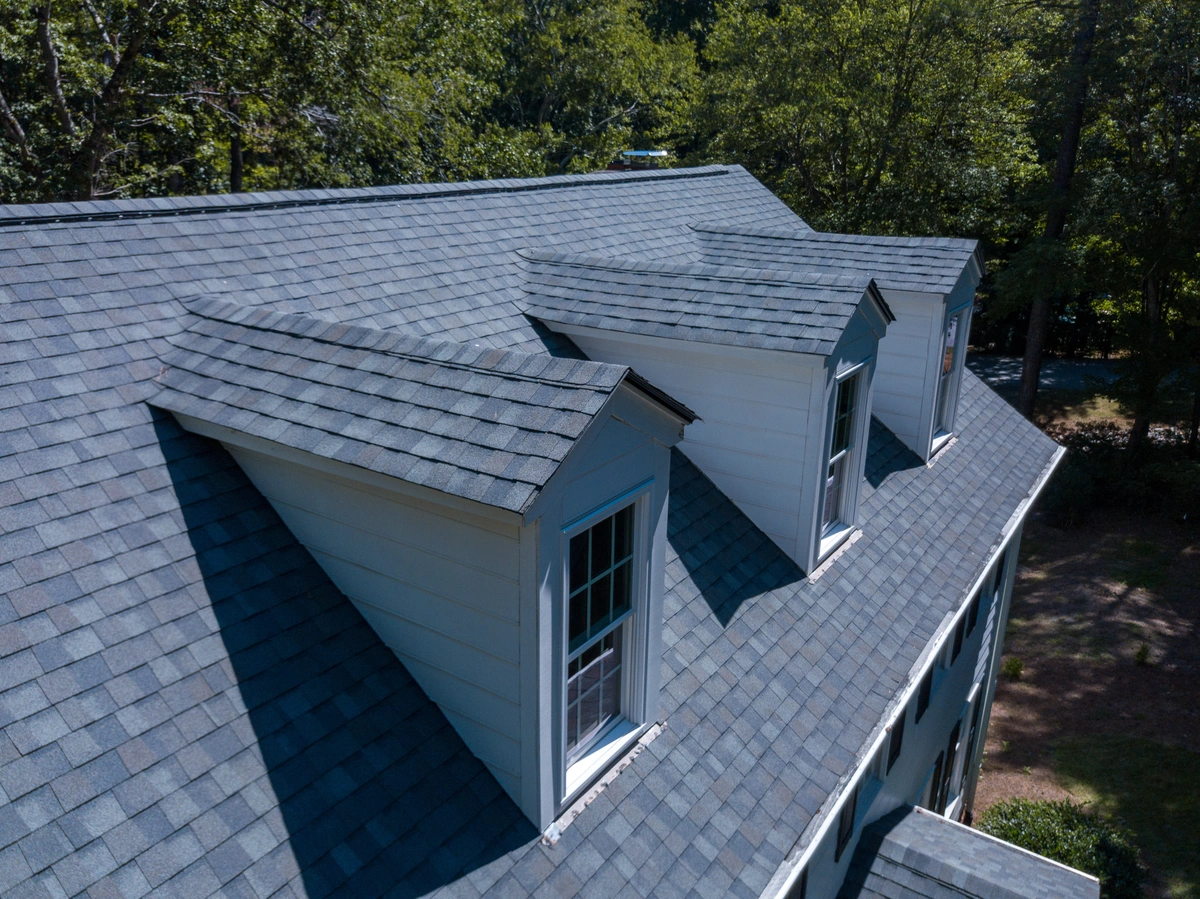Protecting your home starts with your roof, and at the heart of your roof’s performance are its shingles. But what exactly are shingles made of? If you’ve found yourself asking this, you’re not alone. Whether you’re considering roof repairs, a replacement, or you’re simply curious about how your roof works, knowing what shingles are made of can provide valuable insight. Here’s what this blog will cover:
- The materials shingles are made from
- A numbered breakdown of common shingle materials
- Why understanding shingle materials matters
🤔 What Are Shingles Made Of?

Roof shingles may seem like simple components, but they’re meticulously designed to shield your home from the elements. Roof shingles for homes come in various materials depending on the type of shingle, the climate they’re designed for, and the overall budget of the homeowner. Despite the differences, most asphalt roof shingles and other types include a combination of base materials, binders, and coatings that ensure durability and performance.
Proper roof installation and roof maintenance are just as important as the shingles themselves. Even the most high-quality roofing shingles can fail if they’re not correctly installed or if routine roof inspections are neglected. Regularly checking for roof damage, such as cracks or missing shingles, can prevent costly roof repairs and ensure your roof provides long-lasting protection.
Common Shingle Materials Explained: 5 Key Components
To simplify, here are the five most common materials shingles are made of:
- Fiberglass – Provides a strong, lightweight base for many asphalt shingles.
- Asphalt – A waterproof coating that protects against weather and erosion.
- Wood – Used for natural-looking shingles like cedar and redwood options.
- Clay or Concrete – Durable bases for tile shingles, ideal for specific climates.
- Metal – Found in modern shingles, offering lightweight, sustainable options.
🏠 5 Shingle Types and Their Materials

Different types of shingles are made from unique materials to cater to the diverse needs of homeowners. Some shingles prioritize durability, others focus on aesthetic appeal, while many aim to strike the perfect balance between affordability and functionality. Below, we’ll explore the most common types of shingles available, along with the materials that make them so effective.
1. Asphalt Shingles
Asphalt shingles are the most popular roofing option across North America, ideal for homeowners searching for affordable and durable roofing solutions. Their affordability, durability, and versatility make them a go-to choice for many residential roofing projects. With easy shingle roof installation and availability in a wide range of colors and styles, asphalt shingles allow homeowners to customize their roofs to match personal preferences. They are particularly suited to various climates, offering reliable protection against rain, wind, and even moderate hail.
These roofing shingles are typically built using a fiberglass or organic base mat. The fiberglass base mat provides strength and resistance to tearing, while the organic mat, made from recycled materials such as wood pulp, offers a more environmentally friendly roofing option. The base is then coated with asphalt, which acts as a waterproof barrier, protecting the roof from moisture and weather-related damage.
Finally, the top layer consists of ceramic granules, which not only add a pop of color but also enhance UV resistance, helping to prevent the shingles from degrading under prolonged sun exposure. Asphalt shingles are one of the most cost-effective roofing materials on the market, making them ideal for budget-conscious homeowners.
2. Wood Shingles
For those seeking a natural, rustic appearance in roofing materials, wood shingles are an excellent option. These shingles lend a timeless, handcrafted look to any home, making them especially popular for cottages, farmhouses, and other traditional architectural styles. Beyond their aesthetic charm, wood shingles are also highly durable when maintained properly and can last for decades.
Wood roofing shingles are often crafted from cedar or redwood, two types of wood known for their natural durability and resistance to decay, but you can also invest in composite roofing options to achieve a rustic look with additional benefits.
As far as natural cedar roofing materials, the natural oils in these woods help protect the shingles from pests, mold, and water damage. In some cases, wood shingles are treated with protective coatings to enhance their fire resistance or to improve their ability to withstand harsh weather conditions. While wood roof shingles require regular maintenance, their long lifespan and elegant appearance make them a worthwhile investment for homeowners seeking a unique and eco-friendly roofing option.
3. Tile Shingles
Tile shingles are renowned for their longevity and classic elegance, making them a premier choice for roofing. Often associated with Mediterranean, Spanish, or Southwestern-style homes, these shingles bring a timeless aesthetic to any property. Tile roof shingles can withstand the test of time, with some tile roofs lasting over a century when properly cared for.
These shingles are typically made from clay or concrete, both of which are kiln-fired to achieve exceptional strength and resistance to the elements. Clay tiles offer a more traditional and natural look, while concrete tiles are more versatile in terms of color and design, making them a great choice for modern roofing styles. Some tiles are treated with glazes or pigments to add vibrant colors and improve their resistance to weathering. Although tile shingles are heavier and may require reinforced roof structures, their beauty, durability, and energy-efficiency make them a premium roofing material for homeowners investing in long-term solutions.
4. Slate Shingles
Slate shingles are often considered the gold standard in roofing materials, offering unmatched elegance, durability, and natural beauty. These shingles exude luxury and sophistication, making them a popular choice for high-end homes, historic properties, and eco-friendly roofing projects. In addition to their striking appearance, slate shingles are extremely long-lasting, often enduring for over a century.
What sets slate roof shingles apart is their material—natural slate rock. Each shingle is cut from stone, providing a unique, natural texture that cannot be replicated by synthetic materials. Slate is inherently resistant to fire, water, and harsh weather, making it one of the most durable and sustainable roofing options available.
Additionally, slate shingles are environmentally friendly, as they are made from natural materials and can be recycled at the end of their long lifespan. While they are among the most expensive roofing materials, their exceptional durability, timeless beauty, and energy efficiency make them a worthwhile investment for homeowners looking to enhance their home’s value and curb appeal.
5. Metal Shingles
Metal shingles are a modern roofing option that is quickly gaining popularity. They combine contemporary style with exceptional durability, making them a great choice for homeowners looking to update their roofs with a sleek, long-lasting material. Metal shingles are lightweight, making them easier to install and less demanding on roof structures compared to heavier roofing materials like tile or slate.
These shingles are typically made from aluminum, steel, or copper. Aluminum is lightweight and resistant to rust, while steel offers added strength and durability. Copper, on the other hand, adds a unique, luxurious look that develops a beautiful patina over time.
To further enhance their performance, metal shingles are often coated with protective finishes that prevent rust and extend their lifespan. In addition to being highly durable, metal shingles are also environmentally friendly, as they are recyclable and often made from recycled materials. Their ability to reflect heat can also improve energy efficiency, making them a practical and stylish choice for modern homeowners.
Metal roofing shingles provide excellent protection against harsh weather conditions and are a top choice for energy-efficient roofing solutions. With their advanced durability, eco-friendly benefits, and modern design, metal shingles have become a preferred roofing material for long-term cost savings and a sustainable home improvement solution.
👉 Why Understanding Shingle Materials Matters

Understanding shingle materials is crucial because the right choice can impact your roof’s durability, energy efficiency, and overall cost. Knowing the options helps you make an informed decision that fits your home’s needs and budget.
Your Climate Matters
Understanding your local climate is essential when choosing the right shingles for your roof. Different roofing materials are designed to perform better under specific environmental conditions. For instance, asphalt shingles are a popular choice for their affordability and versatility but may struggle in regions with extreme heat or intense sunlight, as they can warp or degrade over time. On the other hand, tile or metal shingles are better suited for hot climates due to their durability and resistance to high temperatures. In cold or snowy environments, materials like metal shingles can help shed snow more efficiently, reducing the risk of roof damage from heavy accumulation.
By selecting a roofing material that aligns with your region’s weather patterns, you can ensure your roofing system lasts longer, performs effectively, and requires fewer roof repairs or replacements over time. Whether you’re looking for energy-efficient roofing, weather-resistant materials, or stylish yet durable shingles, understanding your options is a key step in creating a reliable and long-lasting roof for your home.
Longevity vs. Budget
When choosing roofing materials, it’s important to weigh the upfront cost against the long-term value. While materials like slate shingles or metal roofing may have a higher initial price tag, they often provide exceptional durability and longevity. Slate shingles, for example, can last 50-100 years with minimal maintenance, making them an attractive investment for homeowners seeking long-term performance. Similarly, metal roofs are known for their ability to withstand harsh weather conditions, resist corrosion, and last for decades. While these options may cost more than asphalt shingles initially, their extended lifespan and reduced maintenance needs can save you significant money in repair or replacement costs over time. For those on a tighter budget, it’s still possible to find cost-effective materials that balance affordability with durability. Carefully considering both your budget and your long-term goals can help you make a smart investment that protects your home while providing lasting value.
⭐️ Shingle Composition and Which is Best for You
Understanding what shingles are made of is crucial for making informed decisions about your roofing needs. At Palladium Roofing, we combine expert knowledge, high-grade materials, and personalized service to ensure your roof is built to last.
Whether you’re selecting the perfect shingles or need guidance on repairs or replacement, our team is here to provide trusted advice and top-quality workmanship. Contact us today for a complimentary inspection and let us help protect your home with a roof you can rely on.





